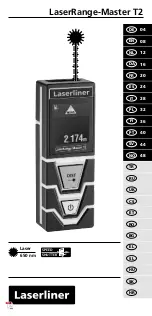
Maintenance—492/492P Service Vol. 1 (SN B030000 & up)
REPLACING ASSEMBLIES
AND SUBASSEMBLIES
Most assemblies or sub-assemblies in this instrument
are easily removed and replaced. The following describes
procedures for replacing those assemblies that require spe
cial attention. Top and bottom views of the 492/492P with
Options 01, 02, and 03, are shown in Figs. 4-6 and 4-7.
These figures identify most assemblies by name and assem
bly number.
A tuning screw, mounted through the top of the diode
assembly, adjacent to the 8-32 screw hole is adjusted to null
a start spur on band 1 to -1 3 dBm. Although pre
calibrated, care should be taken to not force the tuning
screw after it bottoms out on the surface of the quartz sus
pended substrate. (The null usually occurs about one full
turn from the bottom.)
Removing or Replacing Semi-rigid Coaxial Cables
Performance of the instrument is easily degraded if these
connectors are loose, dirty, or damaged. The following pro
cedure will help ensure good performance.
1. Use a 5/16 inch open-end wrench to loosen or tighten
the connectors. It is good practice to use a second wrench
to hold the rigid (receptacle) portion of the connector to pre
vent bending or twisting the cable.
2. Ensure that the plug and receptacle are clean and free
of any foreign matter.
3.
Insert the plug connector fully into the receptacle be
fore screwing the nut on. Tighten the connection to
8
to 10
inch pounds. Do not overtighten (15 to 20 inch pounds) be
cause this can damage the connector.
Replacing the Dual Diode Assembly
The
diode sub-assembly housing the Schottky mixer di
odes
permits easy field replacement of the diodes.
The diodes are beam-lead devices mounted on a
quartz suspended substrate; these diodes are ex
tremely static sensitive. Refer to the Caution note on
static that precedes this section. Do not expose the
diode assembly to any RF field.
The
diode sub-assembly is secured in place with four 0-
. 80
screws. An 8-32 threaded hole is provided to facilitate
4
Insertion and
removal of the sub-assembly. There are three
. contact
points located on the substrate side of the sub-as
sembly..
Use care when mounting and orienting these con-
- tacts
with the mating contacts in the mixer assembly to
« ensure
proper fit and function. Insertion and removal of the
sub-assembly more than twice is not recommended due to
the gold
ribbon attach technique used in fabrication.
The diode assembly is packaged in a static-free package.
Keep the diode sub-assembly in this package until ready to
install. The following procedure should be used when replac
ing this sub-assembly.
1.
Remove the two mounting screws and remove the
assembly from the 492/492P; then loosen and disconnect
the three coaxial cable connections to the mixer assembly.
2.
Remove the four 0-80 screws and insert a 8-32 screw
into the threaded hole provided in the center of the diode
assembly.
3.
Lift the diode assembly out of the mixer assembly by
means of the 8-32 screw; then remove the screw.
4.
Open the diode package, grasp the diode assembly
by its side with tweezers and place it on a static-free sur
face. Grasp the side of the assembly with the fingers to
avoid contact with the diodes and insert the 8-32 screw.
5.
Orient the diode assembly so the three contact tips
are aligned with their respective contacts in the mixer; then
using the index fingers of both hands so equal pressure is
applied, press the sub-assembly into place.
6
.
Insert the four mounting screws, tighten, then replace
and tighten the three coaxial connectors so they are just
snug. Install the two mounting screws that hold the assem
bly in the 492/492P.
Replacing the Crt
Removal
1. Remove the snap-in printed bezel and crt light filter.
2. Use a 8/64 inch Allen wrench to remove the four bezel
screws, unplug and remove the inner bezel.
REV SEP 1983
















































